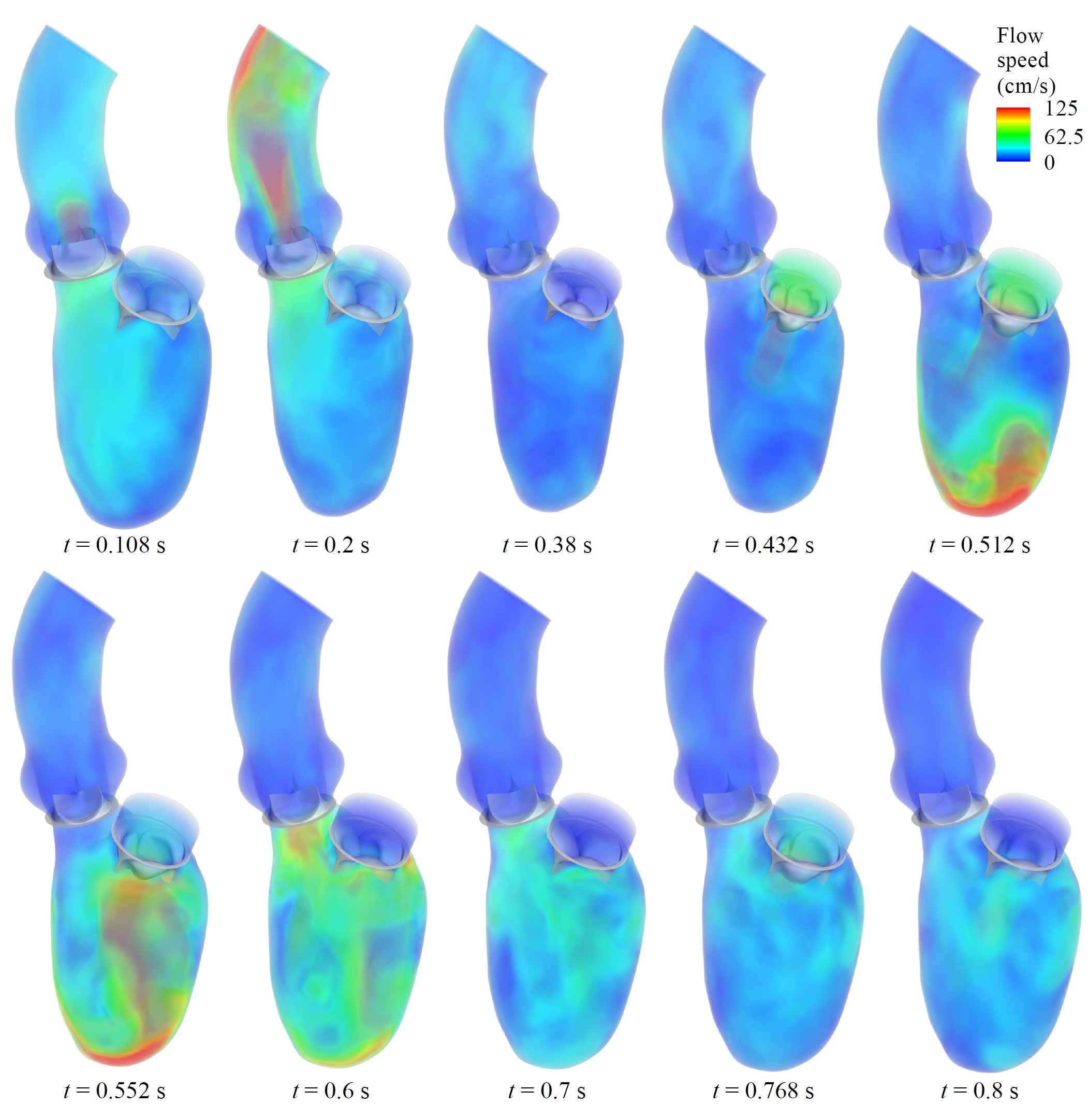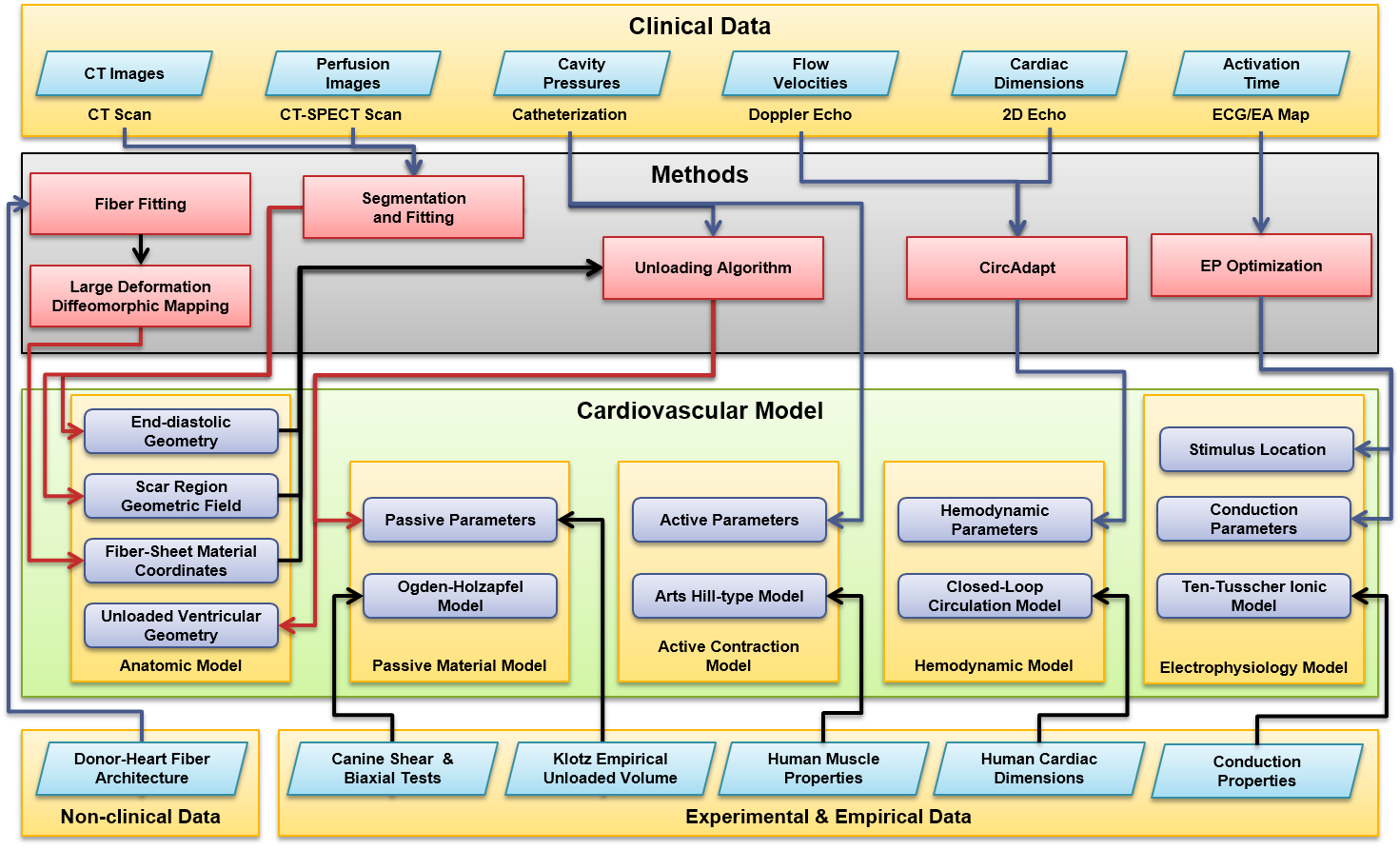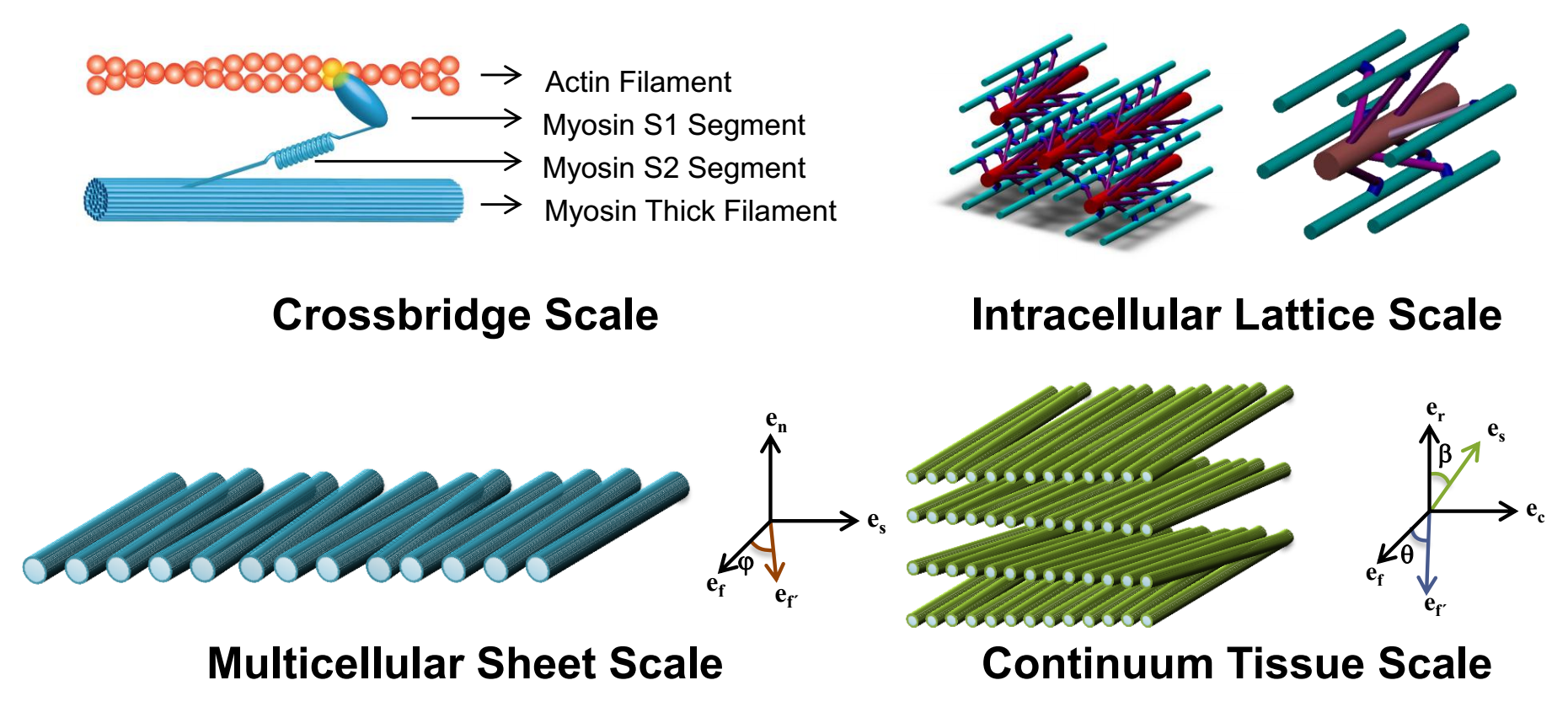Cardiac Modeling
We have developed a framework to model patient specific heart geometries and perform biomechanics simulations. The following projects were developed in collaboration with Andrew McCulloch and the Cardiac Mechanics Research Group at UC San Diego.
Fluid-Structure Interaction(FSI) SimulationsWe have used computational FSI to develop an improved understanding of the effects of replacing both aortic and mitral valves with bioprostheses. The results from the simulations in this work indicate that the replacement of the native mitral valve with a tri-radially symmetric bioprosthesis dramatically changes the ventricular hemodynamics. Most significantly, the vortical motion in the left ventricle is found to reverse direction after mitral valve replacement. More details can be found in this MRC paper. |
|
Four-Chamber Cardiac ModelIn this work, we created a four-chamber cardiac model utilizing cubic-Hermite elements and simulated a full cardiac cycle by coupling the 3D finite element model with a lumped circulation model. We simulated a complete cardiac cycle of a healthy heart and a heart with acute myocardial infarction. We observed a 20% reduction in acute work done by the heart immediately after myocardial infarction. More details can be found in this J. Biomech paper. |
|
Patient-Specific ModelingWe have developed methods for performing multi-scale FE simulations using patient-specific heart geometries of heart failure patients. Computational models, developed from patient-specific clinical data, can help refine the diagnosis and personalize heart failure intervention therapies. More details can be found in the following papers: PBMB, JCP, STACOM. |
|
Microstructure ModelWe have developed microstructurally-based multiscale models of the muscle tissue that take into account the micro-scale cross-bridges that are present in a muscle cell. The force developed by the cross-bridges is then incorporated in the macro-scale finite element continuum model at the gauss points. Such models can be used to understand the role of the microstructure in certain heart diseases. Please refer to this book chapter for more details. |


